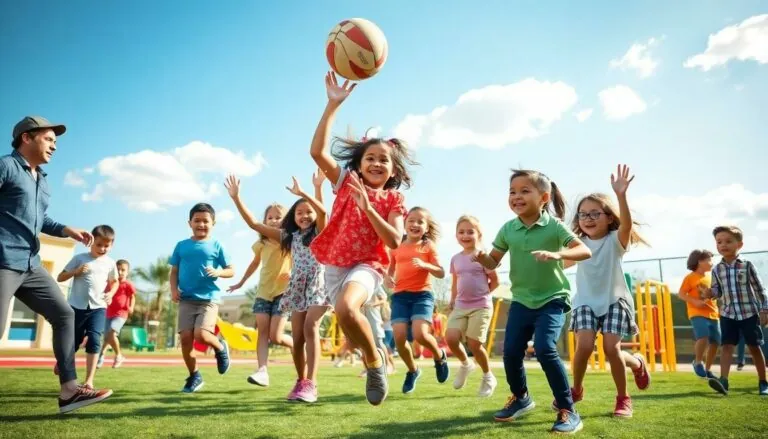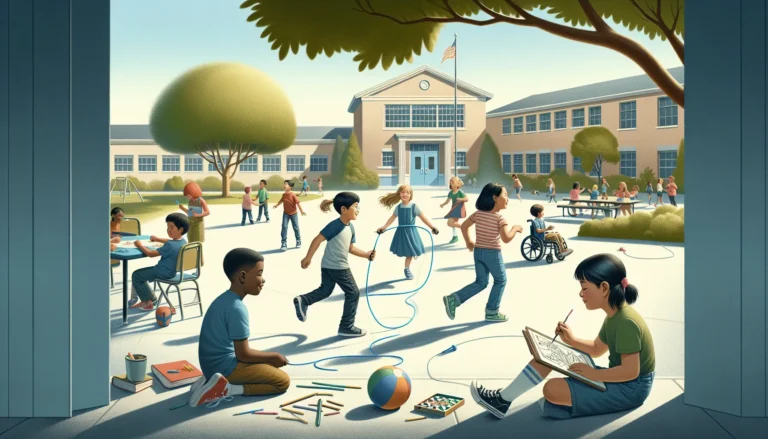In a world where traditional classrooms can feel like a never-ending cycle of lectures and standardized tests, alternative school programs are shaking things up. These innovative educational paths cater to students who thrive outside the conventional system, offering unique approaches that inspire creativity and critical thinking. Who knew learning could be as refreshing as a cold drink on a hot day?
Imagine a place where students can explore their passions, engage in hands-on projects, and actually enjoy their education. Alternative programs provide just that, giving students the chance to learn in ways that resonate with them. Whether it’s through experiential learning, arts integration, or personalized curriculums, these schools are redefining what it means to be educated. Buckle up as we dive into the exciting world of alternative school programs and discover how they’re paving the way for a brighter future in education.
Table of Contents
ToggleOverview Of Alternative School Programs
Alternative school programs cater to students who experience challenges in traditional educational settings. Programs emphasize individual strengths and unique learning styles. Their pedagogical approaches vary, incorporating project-based learning, experiential activities, and thematic instruction.
Many alternative schools adopt smaller class sizes, allowing for more personalized attention. These environments foster strong relationships between educators and students. Students benefit from tailored curriculums that align with their interests and future goals.
Innovative methodologies often involve hands-on experiences that enhance skill development. Programs encourage creativity through art, music, and technology integration. Additionally, students engage in community service projects, promoting social responsibility and real-world application.
Assessment practices differ from standard testing methods. Many programs emphasize mastery-based assessments over traditional grades. This approach helps students understand knowledge retention and application rather than simply memorizing information.
Graduation rates for alternative school programs can surpass those of conventional schools. Various studies report improvements in student engagement and attitude toward learning. Outcomes often include lower dropout rates and increased college readiness.
Parents appreciate alternative options for their children as they can address social and emotional needs. These schools often provide support services, including counseling and mentorship programs. Flexibility in scheduling also accommodates diverse life circumstances, encouraging student participation.
Organizations supporting alternative education programs are more prevalent. They collaborate to enhance curriculum design, educator training, and student resources. Networking among schools leads to shared best practices, further enriching the educational landscape.
Through these diverse approaches, alternative schools contribute significantly to the future of education. They empower students to take charge of their learning journey, preparing them for success in a rapidly changing world.
Types Of Alternative School Programs
Alternative school programs come in various forms, catering to diverse student needs. Each program type enriches the educational landscape with unique approaches to learning.
Therapeutic Schools
Therapeutic schools focus on students with emotional and behavioral challenges. These institutions integrate counseling and psychological support into their curriculum. Students engage in therapy sessions alongside traditional academics, creating a holistic learning environment. Class sizes remain small, allowing for personalized attention. Programs emphasize life skills and social development, significantly boosting students’ self-esteem. Often, these schools partner with mental health professionals, ensuring comprehensive care.
Montessori Programs
Montessori programs promote self-directed and hands-on learning. Students often choose activities that align with their interests, encouraging intrinsic motivation. This approach fosters independence while nurturing creativity and critical thinking. Multi-age classrooms allow older students to mentor younger peers, enhancing community and collaboration. Educators act as guides rather than traditional instructors, facilitating exploration and discovery. This method adapts to varied learning styles, making education more accessible and engaging.
Online Alternative Learning
Online alternative learning offers flexibility for students outside traditional settings. Access to a wide range of resources allows for personalized pacing in education. Virtual classrooms create opportunities for interactive learning experiences, regardless of location. Students receive tailored lessons that cater to their individual strengths and interests. Various platforms incorporate multimedia components, enriching the learning process. Many programs provide support services, including tutoring and mentorship, fostering a comprehensive virtual environment.
Benefits Of Alternative School Programs
Alternative school programs offer various benefits for students who struggle in traditional settings. These programs foster a supportive environment, catering to individual learning styles and needs.
Personalized Learning
Personalized learning remains a cornerstone of alternative school programs. Students engage with customized curriculums designed around their interests and strengths. This focus promotes deeper understanding and knowledge retention. Educators often work closely with each student, tailoring lessons to maximize their potential. Through one-on-one interactions, students receive immediate feedback, enhancing their learning experience.
Improved Engagement
Improved engagement becomes evident in alternative school environments. Traditional schooling often fails to capture students’ interests, resulting in disengagement. Alternative programs prioritize hands-on projects and interactive lessons that stimulate curiosity and foster motivation. By integrating real-world applications, these schools hold students’ attention and encourage active participation. Studies indicate that students in alternative settings display higher enthusiasm for learning, leading to increased academic success.
Social Skills Development
Social skills development is another key benefit of alternative school programs. Smaller class sizes facilitate stronger relationships among peers and educators. Students often collaborate on group projects, enhancing teamwork and communication skills. Programs frequently include community service projects, which promote social responsibility and empathy towards others. Such experiences help students build vital interpersonal skills needed for future success in diverse environments.
Challenges Faced By Alternative School Programs
Alternative school programs encounter several challenges that affect their effectiveness and reach. These issues often hinder their ability to provide innovative educational experiences.
Funding Issues
Funding issues significantly impact the sustainability of alternative school programs. Many of these schools depend on limited financial resources, which can restrict their ability to hire qualified staff and maintain facilities. Inadequate funding often leads to a lack of essential supplies, impacting the learning environment. Programs face competition for funding from conventional schools that receive more governmental support. As these schools struggle for financial stability, they may undertake creative fundraising efforts or seek grants, but uncertainty remains a constant challenge.
Stigmatization
Stigmatization poses a considerable barrier to the acceptance of alternative school programs. Society often views these schools as less desirable compared to traditional educational settings. Negative perceptions may stem from misconceptions about the students enrolled, often viewed as troubled or at-risk. Such stereotypes can discourage families from considering these options for their children. Additionally, students may internalize this stigma, impacting their self-esteem and overall academic experience. Addressing these biases through community outreach and engagement remains crucial for fostering understanding and support.
Success Stories
Alternative school programs showcase numerous success stories that highlight their effectiveness. Impressive transformations occur when these programs cater to individual student needs.
Case Study 1: Community-Based Programs
Community-based programs excel in creating supportive educational environments. For example, one grassroots initiative in a rural area successfully offers project-based learning focused on local ecosystem preservation. Students participate in hands-on activities that foster environmental stewardship while developing critical thinking skills. Enrollment in this program led to a remarkable 40% increase in student engagement compared to previous local educational options. Additionally, students gain valuable experience through partnerships with local organizations, contributing to their community.
Case Study 2: National Initiatives
National initiatives have also proven impactful, demonstrating the scalability of alternative education. A nationwide program implemented flexible online learning paths for at-risk students, allowing tailored pacing for each learner. This initiative achieved a notable 30% increase in graduation rates among participants. Students select subjects that align with their interests and career aspirations, enhancing motivation. Mentorship opportunities provided through the program connect students with industry professionals, facilitating career readiness. Such initiatives inspire schools across the country to adopt similar models, expanding access to alternative education.
Conclusion
Alternative school programs represent a significant shift in educational approaches that prioritize individual student needs and strengths. By fostering creativity and critical thinking through personalized curriculums and hands-on projects, these programs not only enhance academic engagement but also prepare students for real-world challenges.
The growing interest and success of alternative education highlight its potential to redefine learning experiences for diverse learners. As communities continue to support these innovative models, the future of education may increasingly embrace flexibility and inclusivity, ensuring every student has the opportunity to thrive.





